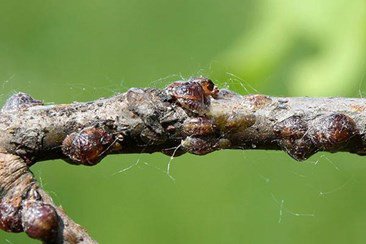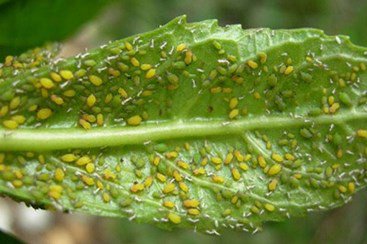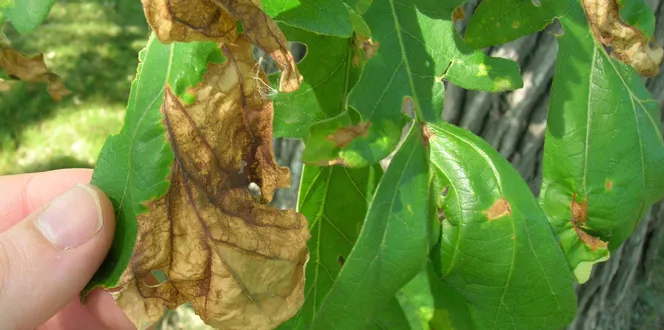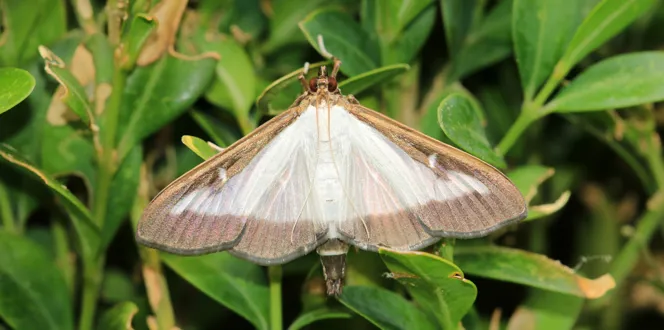When the weather turns cold, we tuck away in the coziest spot we can find.
Like it or not, pests in our yard do the same. They get up close and personal with our plants in winter and hang out there until warmer days kick in.
Some overwintering critters aren’t a cause for concern, but others need to be nipped in the bud for the good of our plants. Below, read about just a couple of the pests that overwinter on plants and what you should do to get rid of them.
What is an overwintering pest?
An overwintering pest is a bug that hides away in a warm spot during the winter season, waiting for springtime. Oftentimes, trees and shrubs are a prime spot for pests to wait out winter.
Scale Insects
When sap-loving scale insects feed on trees and shrubs, they can cause yellowing or wilting leaves or even stem and branch death.
What does scale look like?

The best way to describe scale insects is as tiny bumps on tree branches and twigs. Scale insects are flat, round and have a hard or soft “waxy” covering. Their discreet look can make it really hard to spot them out on trees and shrubs.
Types of scale insects
These little critters fall into two categories: armored scales and soft scales.
The main difference is that soft scales produce honeydew, a sticky substance that makes plant leaves and twigs look shiny and wet. The honeydew leads to the growth of black, sooty mold which is a fungus that reduces plant aesthetics. Armored scales, on the other hand, don’t make honeydew. Another difference is that the waxy cover on armored scales serves as a protective shell.
Tree scale treatment
Timing is everything when it comes to treating scale insects. Thoroughly applying dormant oil in late fall or in early spring before leaves sprout will suffocate overwintering scales before they have a chance to mature and feed on trees. Here’s how to get rid of scale insects with dormant oil.
Aphids
Like scale insects, hungry aphids feed on plant sap and leave behind sticky honeydew and sooty mold.
What are aphids?

Aphids are one of the most common garden pests because they multiply at a crazy fast rate. In summer, female aphids produce young aphids that mature and reproduce in a matter of just a couple weeks. And then those baby aphids mature and produce even more aphids. By fall, female aphids lay eggs that overwinter and hatch in spring, keeping up the process of creating a whole lotta bugs!
How to prevent aphids
Usually, pests = problems. But aphids are mostly a nuisance on plants. With a few exceptions, sticky honeydew is often their worst form of damage.
But, if these crawlers still give you the creeps, the best way to prevent them is to stop their cycle. Applying a dormant oil in winter will kill overwintering aphid eggs so they can’t cause a problem next season.
How to treat aphids
Aphid pest control is a pretty easy job, first, because lots of natural predators help cut down on aphid populations, and also because aphids are very soft, small bugs that can be washed away with water. Here's how to get rid of aphids on large or small trees.
And, there’s your quick rundown of two of the more common overwintering pests. But, keep in mind that many other kinds of bugs stakeout on plants in winter.





